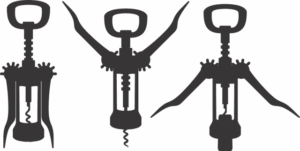Internal linking is a powerful SEO strategy that connects relevant pages within a website, improving user experience and site navigation. By strategically placing links, it keeps users engaged, reduces bounce rates, and guides search engines to authoritative content. Using transactional keywords like "internal linking for SEO" on landing pages enhances relevance and attracts users seeking specific solutions. Best practices include keeping link contexts relevant, using descriptive anchor text naturally, and crafting compelling call-to-actions (CTAs). Measuring success through data analysis is crucial for refining the internal linking strategy, driving more traffic, and improving search engine rankings.
In the digital landscape, internal linking is a powerful strategy to enhance website performance and user experience. This article delves into the intricacies of internal linking, focusing on its pivotal role in SEO strategies. We explore how transactional keywords can optimize landing pages, attracting users while aligning with search engine algorithms. Through practical tips on structure, call-to-actions, and data analysis, you’ll discover methods to refine your internal linking approach, ultimately boosting your site’s visibility and user engagement.
- Understanding Internal Linking: Its Role in SEO Strategy
- The Power of Transactional Keywords: Unlocking Landing Page Potential
- Optimizing for Search Engines: Best Practices for Internal Linking
- Crafting Compelling Call-to-Actions: Encouraging User Engagement
- Technical Implementation: Creating an Efficient Internal Link Structure
- Measuring Success: Analyzing Data to Refine Your Approach
Understanding Internal Linking: Its Role in SEO Strategy

Internal linking is a fundamental component of any effective SEO strategy. It involves creating links within your website’s content to connect relevant pages and resources. This strategic approach plays a pivotal role in enhancing both user experience and search engine optimization (SEO). By utilizing internal links, you can guide users through your site, encouraging them to explore related content, which keeps them engaged and reduces bounce rates.
Moreover, search engines like Google view internal linking as a signal of authority and relevance. When properly implemented, it helps distribute page authority across your website, influencing the ranking potential of individual pages. For instance, linking to high-quality, authoritative pages within your site can boost the SEO for both the linked page and related topics. This strategy also enables you to establish a structured information architecture, making it easier for search engines to crawl and index your content effectively, which is crucial for SEO optimization (internal linking for SEO tips).
The Power of Transactional Keywords: Unlocking Landing Page Potential

In today’s digital landscape, leveraging transactional keywords on landing pages can significantly boost search engine optimization (SEO) efforts, especially when it comes to internal linking strategies. Transactional keywords are powerful tools that reflect user intent and communicate the desired action to both search engines and visitors. When crafting content for internal linking pages, incorporating relevant terms like “internal linking for SEO” and its related phrases can enhance the page’s relevance and authority. This strategy ensures that your website provides valuable information tailored to users’ specific needs, encouraging longer stays and lower bounce rates.
For instance, an internal linking tutorial or guide optimized with these keywords can attract visitors seeking actionable SEO tips. By offering practical advice on implementing effective internal linking for SEO strategies, you not only satisfy user queries but also signal to search algorithms that your content is authoritative and trustworthy. This, in turn, can lead to improved rankings, increased organic traffic, and better overall performance of your website’s SEO efforts.
Optimizing for Search Engines: Best Practices for Internal Linking

Internal linking plays a pivotal role in enhancing your website’s visibility and performance on search engines like Google. When optimizing your site for search engines (SEO), ensuring effective internal linking is crucial. This strategy helps search engine crawlers understand your content’s hierarchy and relevance, ultimately improving your site’s ranking.
Best practices include using descriptive anchor text that accurately represents the linked page’s content, keeping link contexts relevant, and maintaining a natural flow of links throughout your website. An internal linking for SEO tutorial might suggest starting with a sitemap to identify essential pages, then strategically placing links within content to connect related topics. By implementing these techniques, you can improve user experience while boosting your site’s authority in the eyes of search engines, thereby increasing the chances of ranking higher and attracting more organic traffic through improved SEO optimization.
Crafting Compelling Call-to-Actions: Encouraging User Engagement

Crafting compelling call-to-actions (CTAs) is an art that significantly enhances user engagement on landing pages offering internal linking tools. A well-designed CTA should clearly communicate the next step, encouraging users to explore further and take advantage of your offerings. Instead of vague prompts, use specific language that aligns with your SEO strategy. For instance, “Discover More Internal Linking Techniques” or “Boost Your SEO with Strategic Internal Links.” These CTAs not only captivate but also provide a clear direction, guiding users through the intricate landscape of internal linking for SEO.
To create an effective CTA, consider using action-oriented language and highlighting the benefits. For example, “Master the Art of Internal Linking” or “Unleash Your Site’s Potential.” By incorporating these phrases, you’re essentially offering a tutorial on how users can improve their SEO through internal linking for SEO strategy. Such persuasive language not only encourages clicks but also fosters a deeper connection between your brand and the user, ensuring they feel guided rather than overwhelmed.
Technical Implementation: Creating an Efficient Internal Link Structure

Implementing a robust internal linking structure is key to enhancing your site’s SEO. It involves strategically placing relevant links within your page content to connect related pages and guide users (and search engines) through your website. Start by identifying core topics and creating a hierarchical structure, ensuring each page has a clear focus. This not only improves user experience but also allows search algorithms to understand the context of your content.
Use anchor text effectively, providing concise descriptions that accurately represent the linked page’s content. Incorporate these links naturally within your writing, avoiding keyword stuffing. Remember, an internal linking for SEO tutorial or strategy should focus on creating a seamless and intuitive navigation experience while optimizing for search engines. This holistic approach ensures your website is not only well-organized but also performs excellently in search results, driving more traffic and engagement.
Measuring Success: Analyzing Data to Refine Your Approach

Measuring success is a crucial step in optimizing your internal linking strategy for SEO. By analyzing data, you can gain valuable insights into which links are driving traffic, improving user engagement, and boosting your website’s authority. Start by tracking key metrics such as click-through rates (CTR), time on page, bounce rates, and conversion rates for pages with internal links versus those without. An internal linking for SEO tutorial or tips can guide you in setting up appropriate analytics tools to monitor these metrics effectively.
Regularly reviewing these data points allows you to refine your approach and ensure that your internal linking is achieving its intended goals. For instance, if a particular series of links is consistently performing well, consider expanding on those topics with more comprehensive content. Conversely, if certain internal link patterns aren’t yielding desired results, adjust your strategy accordingly. This iterative process is essential for internal linking for SEO optimization, helping you to continually enhance user experience and improve search engine rankings.
